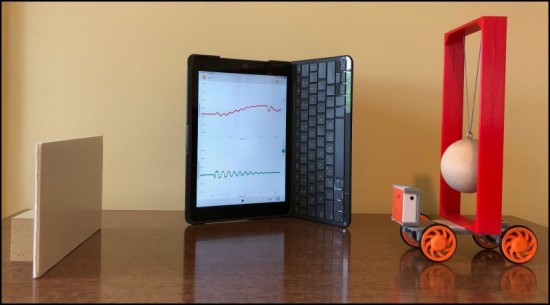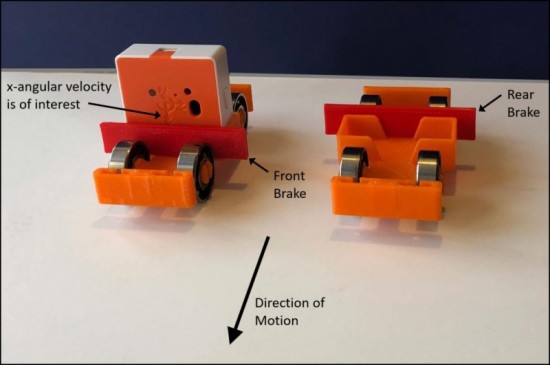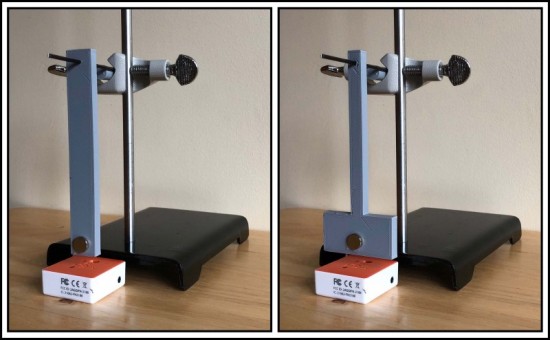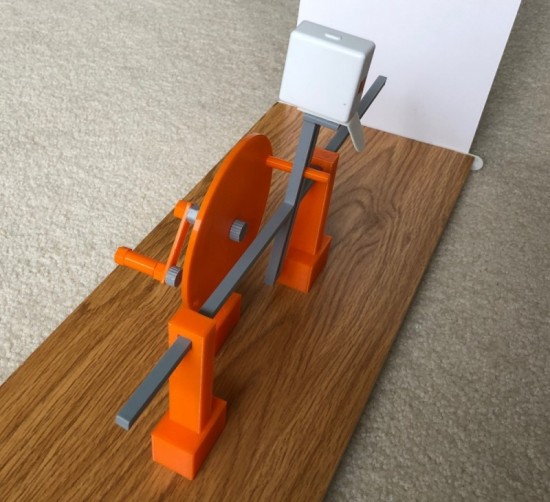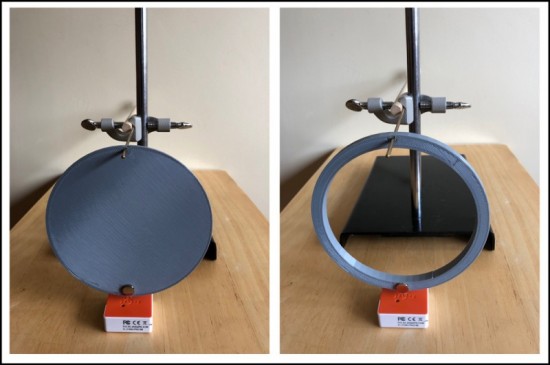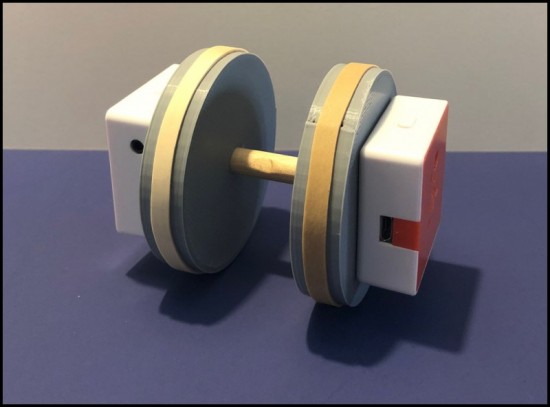Momentum Pendulum Rides the PocketLab HotRod
The Momentum Pendulum
The momentum pendulum is shown in Figure 1. A frame (red) to hold the pendulum was printed on a 3D printer. The STL file in included with this lesson. The frame is solidly attached to the PocketLab HotRod with three damage-free hanging strips. A roughly 3" diameter wood ball with a screw eye attached to the top of the ball is hung from a bifilar suspension so that the ball will swing in a plane. Two small holes at the top of the frame provide an easy way to prepare the string suspension. The smaller set of wheels are used with the HotRod, and

